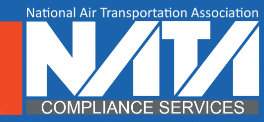
The last few months, we have discussed at length online aviation security training, covering everything from who needs to take training, who is commonly forgotten, how to make your training more efficient, and how much you could spend developing your own training.
All of this is aimed at helping you, and your company, make the best choices possible to not only save money but to make your company more efficient and safe. This month, we take a look why moving your training online is the way to go.
1. Eliminate travel time
It isn’t uncommon for training to take place in a classroom or at a training location. There are costs associated with travel, whether the training is in another building or in another city. Your employee(s) will need to take the time to get to the classroom and this likely is on your tab. Even if it is just a short walk, these costs can add up. Moving your training online eliminates these costs as training can be accessed anywhere, at any time.
2. Maximize convenience
As noted above, online training courses can be accessed anywhere, at anytime. This is convenient for you and your employees since they can be taken whenever it fits into their schedule, as opposed to making their schedule work around training. Take a portion of a class between meetings, while waiting for your next flight or whenever you are most awake. No matter how you slice it, online training is more convenient.
3. Access high-quality content
Most online training courses are designed by professionals and written by subject matter experts. By accessing a third party’s online training, you can take advantage of those expensive resources and pay less for the most up to date training.
4. Real time results
Your employees, who are taking the training course, have access to real time results. This means they can accurately gauge their performance and learn more actively. Good training programs will have knowledge checks, quizzes or tests regularly so the trainee will know where they stand and can be confident they understand the material. Traditional training programs tend to have a singular test at the end where the trainee may only learn the final results, be it a pass/fail or a certain percentage. This doesn’t help them improve on their knowledge.
5. Managers can monitor learner’s progress
Just like an employee, a manager can monitor the progress of an employee to make sure they are properly absorbing the material and meeting the educational objectives. As I heard many college professors say, simply having your butt in the chair doesn’t mean a thing. Just because you have sent your employee to get their security training class doesn’t mean they are actively engaged in a traditional classroom setting. With online training, managers can monitor progress and make certain that training is completed and where the trainee may need more help.
6. Remove geographical boundaries
Many companies in the aviation industry tend to have multiple locations across the country and maybe even internationally. Training in this situation can be even more of a headache due to the logistics of getting everybody together in one place for traditional training. If you elect to have each location do their own training, you can find that there are inconsistencies between locations in what they cover, what they pay attention to and the overall quality of the training. Online training allows trainees to attend training wherever, whenever.
7. Increased interactivity
Think of the traditional classroom. Most of us think of a teacher standing in front writing content on a whiteboard/chalkboard (or reading from a PowerPoint slide), talking at the students with little interaction between the two. While we all have had that awesome teacher who goes above and beyond, this non-interactive situation tends to be what happens most often.
Online training can be much more interactive. Readings, graphics, audio, video, interactive exercises, case studies are commonly used to keep the training interactive and engaging. This not only increases interactivity but engages the student in a way that traditional training methods all too often miss.
8. Learn at your own pace
Countless studies (and, likely, your own personal experience) show that people learn at different rates. Training in a traditional setting doesn’t afford you the opportunity to have variable rates. You can either train quickly to keep your bright employees engaged or more slowly to make sure the slower learning students get everything. Online training removes these as the trainee gets to choose the pace they go at.
9. Record Maintenance
Keeping accurate records of who took what training when, as well as when recurrent training is necessary, can be incredibly cumbersome with traditional training experiences. However, most online training options do this for you. Some aviation security online training programs will keep records of who has taken what training, what date they passed and when they need recurrent training. Furthermore, some will email you and your employee when recurrent training is coming up so you can ensure your employees are compliant.
10. Affordability
Traditional training experiences can be expensive to develop, as we detailed last month but can be just as expensive to run and maintain. Online training eliminates all the costs of development and the majority of costs associated with running your training. You pay for the training you use. Even better, you can find places that offer an “all you can train” option, giving you a fixed cost for training for an entire year, regardless of how many training courses your employees take. As we mentioned in number 9, if you find a place that keeps the records for you and alerts you of upcoming recurrent training requirements, you can eliminate the costs of maintenance as well!
Photo Credit: Flickr




